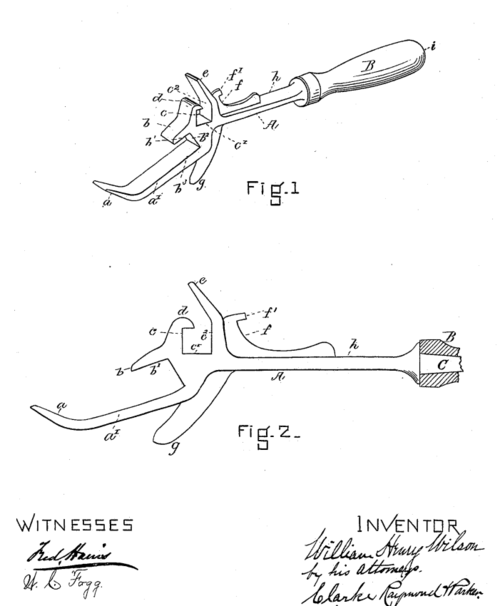That Olde Tyme 3D Printing

Be it known that I, William Henry Wilson, of Fall River, in the county of Bristol and the State of Massachusetts, a citizen of the United States, have invented a new and useful Improvement in a Family Utensil… From the US Patent Office.”
Latest News
August 7, 2013
The US Patent Office has become the source of considerable amounts of consternation in the last two decades. Corporate giants battle over what seem to many onlookers as commonsense innovations (such as the shape of a cell phone), and patent trolls squat on ideas in lieu of generating new designs. It can be enough to make people wonder if the entire patent system could do with an overhaul.
Stifling competition with cease and desist orders certainly wasn’t the original purpose of the patent office. Martin Galese, a New York patent lawyer, hopes he can resurrect some faith in the institution. Instead of searching for patent violations, Galese has begun to comb through the archives in search of patents that have fallen into the public domain and rework those designs as 3D models for modern additive manufacturing (AM) systems.
From Galese’s blog:
The basic idea of a patent is that you get a limited period of exclusivity in exchange for public disclosure of your invention. But what good is that public disclosure sitting in the specifications of 8,000,000+ patents?I’m looking for the cool, weird, and the surprisingly useful in the greatest repository of public domain prior art ever created, the U.S. Patent and Trademark Office.
Often referring to the patent office as the original Thingiverse, Galese has already reproduced a self-measuring bottle from 1906, a portable chess board from 1948, an improved bookmark from 1920, and a number of other patented objects. All of these things now exist in the public domain, making them fair game to reproduce with modern technology.
Along with modern 3D models of old patents, Galese also offers up some opinions on how 3D printing and copyright may well interact.
Copyright arose initially as a way of imposing government control over the disruptive technology of printing presses. Patent may well be the tool used to impose control, governmental or quasi-corporate, on 3D printing.And if you support gun control, for example, *and* get excited about the possibilities of home printing in metal or some more durable material, you should start thinking about how you control a device that can be used to build unregistered copies of a device you don’t even know about.
Because there will be some sort of regulation. Pretending otherwise just leaves a tilled garden for noxious weeds of special interests to regulate.
Below you’ll find a video about the legalities surrounding 3D printing.
Sources: New York Times, Patent-Able
Subscribe to our FREE magazine, FREE email newsletters or both!
Latest News
About the Author
John NewmanJohn Newman is a Digital Engineering contributor who focuses on 3D printing. Contact him via [email protected] and read his posts on Rapid Ready Technology.
Follow DE






